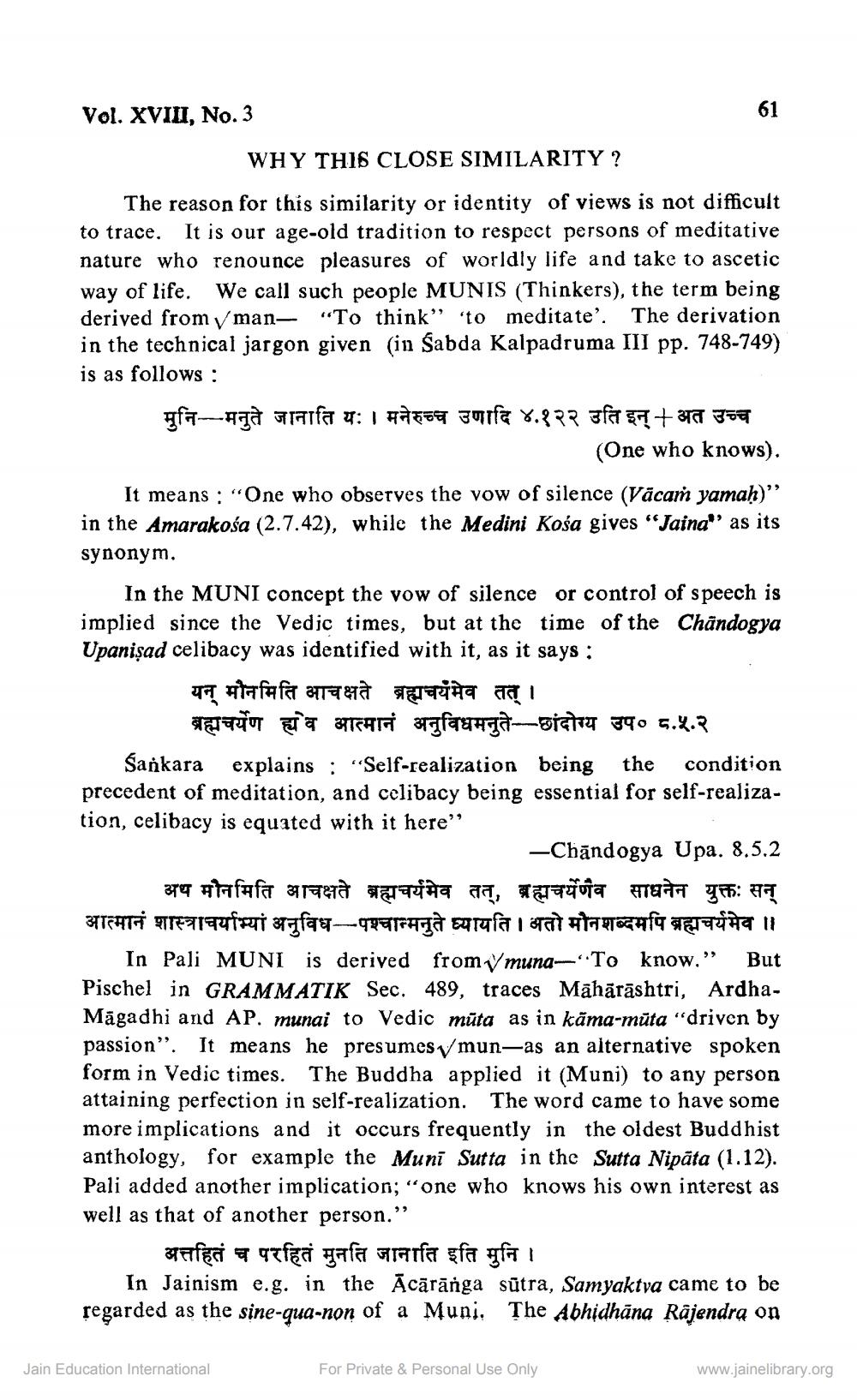________________
Vol. XVIII, No. 3
WHY THIS CLOSE SIMILARITY?
The reason for this similarity or identity of views is not difficult to trace. It is our age-old tradition to respect persons of meditative nature who renounce pleasures of worldly life and take to ascetic way of life. We call such people MUNIS (Thinkers), the term being derived from man- "To think" to meditate'. The derivation in the technical jargon given (in Sabda Kalpadruma III pp. 748-749) is as follows:
मुनि --- मनुते जानाति यः । मनेरुच्च उणादि ४.१२२ उति इन् + अत उच्च
(One who knows).
61
It means "One who observes the vow of silence (Vacam yamaḥ)” in the Amarakośa (2.7.42), while the Medini Kośa gives "Jaina" as its synonym.
In the MUNI concept the vow of silence or control of speech is implied since the Vedic times, but at the time of the Chandogya Upanisad celibacy was identified with it, as it says:
यन् मौनमिति आचक्षते ब्रह्मचर्यमेव तत् ।
ब्रह्मचर्येण ह्येव आत्मानं अनुविधमनुते —— छांदोग्य उप० ८.५.२
Sankara explains: "Self-realization being the condition precedent of meditation, and celibacy being essential for self-realization, celibacy is equated with it here"
-Chandogya Upa. 8.5.2
अथ मोनमिति आचक्षते ब्रह्मचर्यमेव तत्, ब्रह्मचर्येणैव साधनेन युक्तः सन् आत्मानं शास्त्राचर्याभ्यां अनुविध – पश्चान्मनुते घ्यायति । अतो मौनशब्दमपि ब्रह्मचर्यमेव ॥
In Pali MUNI is derived from muna-To know." But Pischel in GRAMMATIK Sec. 489, traces Mahārāshtri, ArdhaMagadhi and AP. munai to Vedic muta as in kama-muta "driven by passion". It means he presumes/mun-as an alternative spoken form in Vedic times. The Buddha applied it (Muni) to any person attaining perfection in self-realization. The word came to have some more implications and it occurs frequently in the oldest Buddhist anthology, for example the Muni Sutta in the Sutta Nipāta (1.12). Pali added another implication; "one who knows his own interest as well as that of another person."
aafgċ a qzfga yafa araıfa sfa yfa
In Jainism e.g. in the Acaranga sūtra, Samyaktva came to be regarded as the sine-qua-non of a Muni. The Abhidhāna Rājendra on
Jain Education International
For Private & Personal Use Only
www.jainelibrary.org




